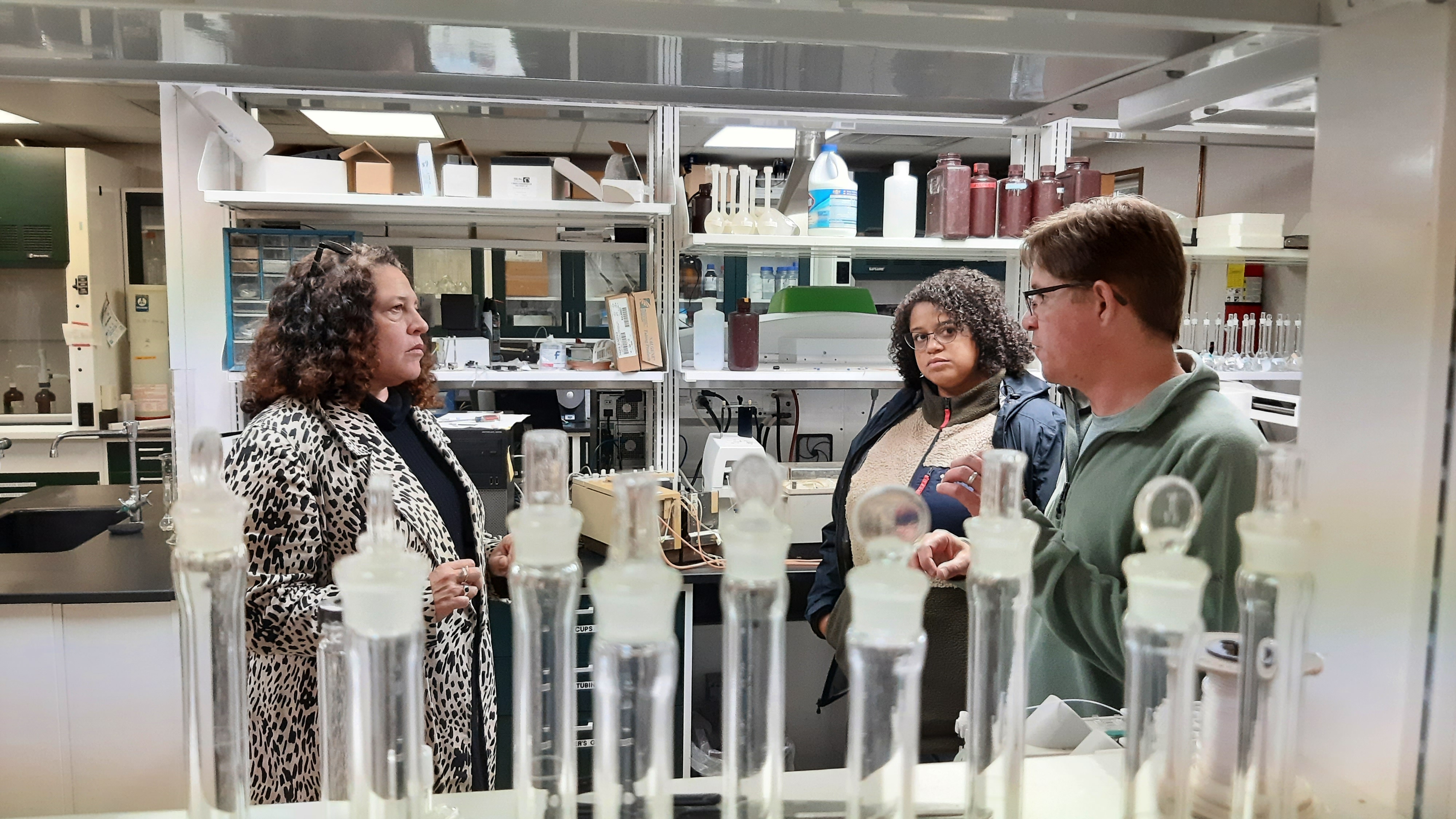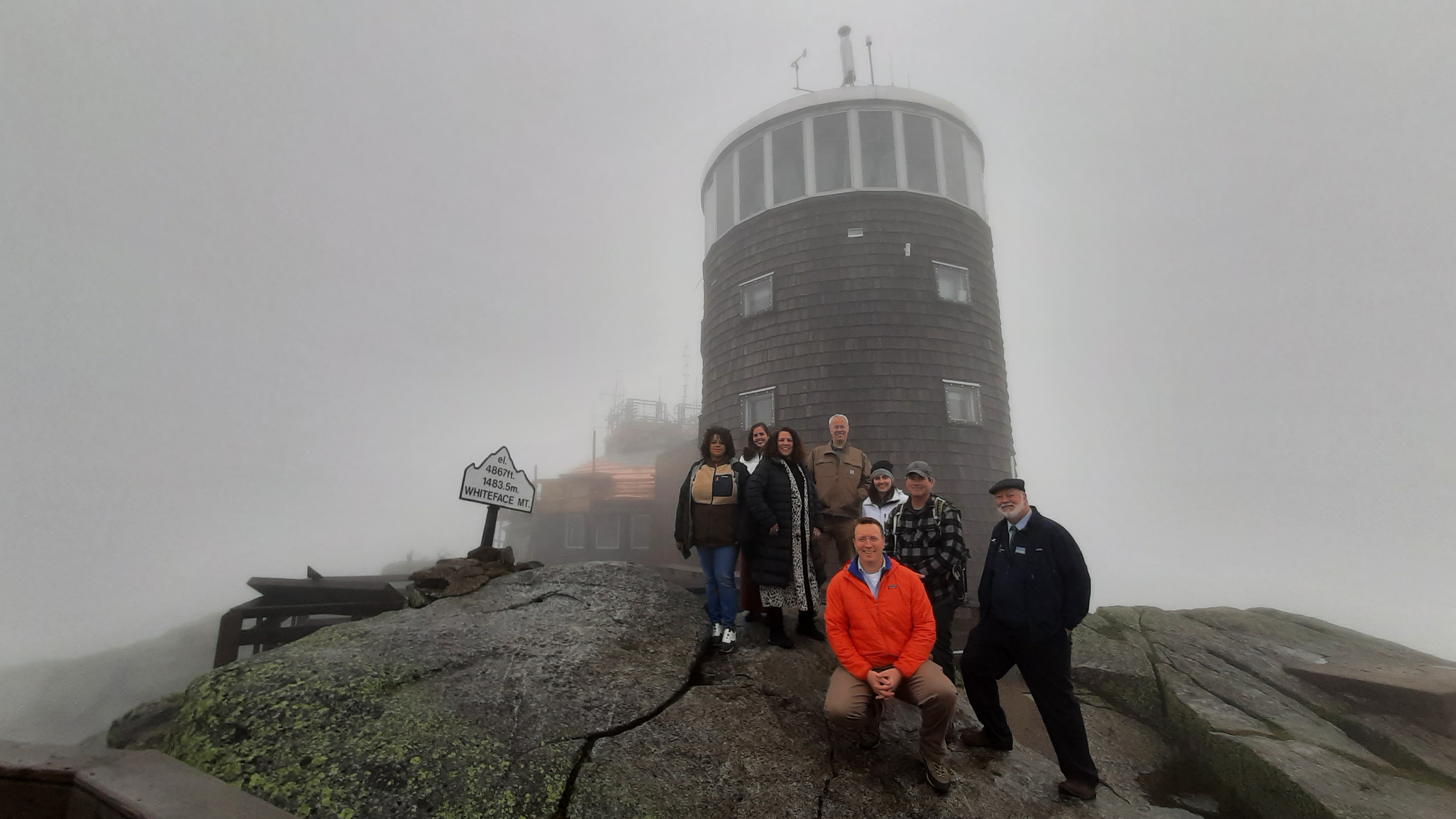
A Brief Historical Context of SCALE
By Blake Neumann - Adirondack Council Clean Water Advocate
Friday, April 7, 2023
This is the first in a two-part series about the Survey of Climate Change and Adirondack Lake Ecosystems (SCALE), which is a vitally important, multi-year study of air and water quality across the Adirondack Park.
A Sour History
Around the middle of the 20th Century, environmentalists began taking notice of the havoc that acid precipitation was causing in the Adirondack Park’s lacustrine ecosystems. Acid deposition in lakes and other small waterbodies (especially at elevation) resulted from fossil fuel combustion of industries to the West producing nitrogen and sulfur oxides that bound with precipitation in the upper atmosphere.
.jpg)
The Clean Air Act was originally introduced in the early 1970s to begin trying to remedy this trend of acidification. While not a perfect piece of legislation, it was a critical first step in beginning to mitigate further damage caused by un-regulated industry and a key acknowledgment of the rising specter of acid-impacted waterbodies across the Northeast.
The Adirondack Lakes Survey Corporation
Through the 1970s, the New York State Department of Environmental Conservation (DEC) collected data confirming that they were seeing impacts of acid deposition in lakes across the state. This eventually provided justification for the formation of the Adirondack Lakes Survey Corporation in 1983 and in the following year, the launch of a four-year comprehensive survey of lakes across the Adirondack Park.

From 1984-1987, a team of field scientists collected chemical, physical and biological metrics from 1,469 Adirondack lakes and ponds that varied in size from half an acre to 700 acres. Findings showed startling acidification of a large number of these lakes, with nearly 25% of the waterbodies surveyed apparently devoid of fish (these were mostly small, shallow, high elevation lakes in the Western Adirondacks).
Doubling Down on Air Quality Protections
In 1990, a report containing the findings of the Adirondack Lakes Survey (ALS) study was produced: Adirondack Lakes Survey: An Interpretive Analysis of Fish Communities and Water Chemistry, 1984-87. The ALS study became one of the most oft-cited research studies on acid precipitation. It also was a catalyst for federal air quality regulatory updates, known as the Clean Air Act Amendments of 1990 (CAAA), which mandated further reductions to sulfur dioxide and nitrogen oxides emissions.

Additionally, in 1992 the USEPA funded a Long-Term Monitoring (LTM) study of a select group of lakes to monitor the effectiveness of the CAAA across time. In late February of this year, I listened to an update at the Adirondack Research Forum in Old Forge from the USEPA division representative charged with managing that program; the update was bittersweet.
The Legacy of USEPA’s Long-Term Monitoring (LTM)
Data collected from the LTM network over the past few decades has demonstrated a significant decline in sulfate for Adirondack waterbodies since the LTM program’s inception, as well as an increase in the “Acid Neutralizing Capacity,” or ANC of the waters sampled. In other words, Adirondack waterbodies appear to have recovered from the startling impacts of acid deposition from the mid-20th Century.
Unfortunately, with the effects of acid precipitation subsiding, USEPA’s LTM program staff explained at the Research Forum that the frequency with which these LTM sites are monitored could be rolled back over time.
The good news is that Paul Smith’s Adirondack Watershed Institute was just awarded a 5-year contract to continue this long-term monitoring in the Adirondacks, so the legacy of this vital, long-standing dataset can continue to grow. As most water scientists would tell you (and as many have told me), the longer you can collect lake monitoring and survey data, the more valuable it becomes to decision-makers by providing a clearer “baseline” picture of what is normal for the waterbody in question and helping to illuminate longer-term trends.
Program staff of EPA’s LTM announced at the Adirondack Research Forum that their sampling may begin shifting to focus on waterbodies that have a greater likelihood of being impacted by climate change, or where the impacts are most observable. They may want to look to New York State, who is leading the way with their announcement of the Survey of Climate Change on Adirondack Lake Ecosystems (SCALE).
The Importance of SCALEing
SCALE is a multi-institutional partnership funded by New York State (thus separate from the federally funded Long-Term Monitoring work) that has proposed to re-vamp the Adirondack Lakes Survey model. Instead of focusing on acid precipitation impacts this time, the SCALE effort will focus in on how climate change has impacted many of the waterbodies sampled during the historic ALS effort. It will also focus on precedent-setting open data collection and storage, a trend that will be increasingly important in the age of widespread climate change impacts.
Fortunately, the State has already provided seed money believed to be a “down payment” for this effort in the previous year’s budget. Now, we eagerly await the State’s budget announcement to see if they intend to make good on that commitment for Fiscal Year 2024. Stay tuned to hear more about the future plans for SCALE after the State’s budget announcement this month.

Blake Neumann joined the Council in 2021 as the Clean Water Advocate. A Kentucky native, his deep love of the Adirondacks comes from his childhood summers spent paddling and camping with family around the Park. Blake holds a Master’s in Public Administration from Syracuse University and a Master’s of Science in Water & Wetland Resource Studies from SUNY-ESF. He most recently was doing similar watershed planning for The Nature Conservancy in Wisconsin. When not working, Blake can be found running or skiing nearby trails, swimming anywhere he can, or in his canoe with his furry co-pilot, Jackson.




